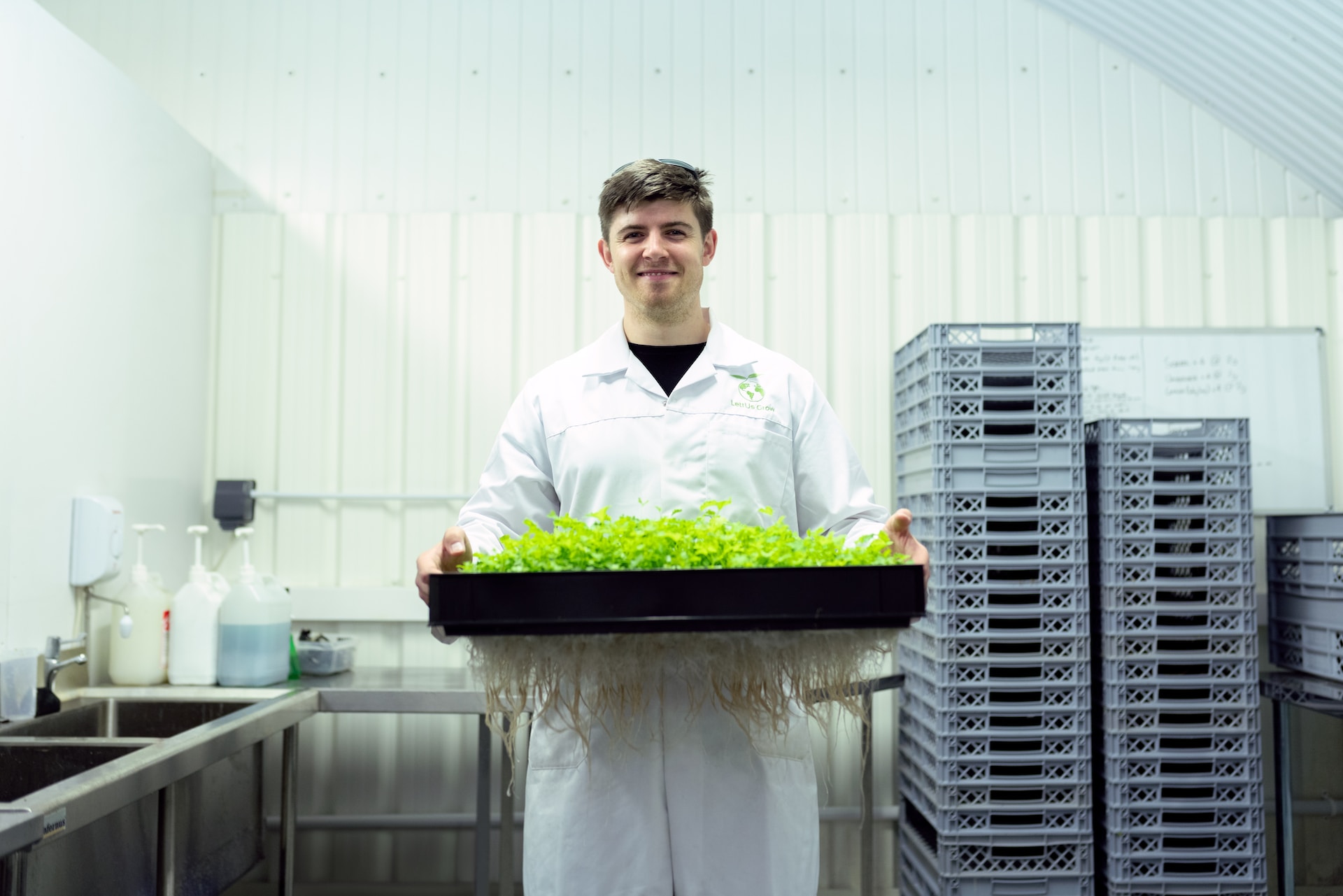
How Can We Address Food Safety Concerns in America?
June 29, 2021 - Emily Newton
Revolutionized is reader-supported. When you buy through links on our site, we may earn an affiliate commision. Learn more here.
The past decade has seen some of the most significant food safety incidents in recent history. An outbreak of listeria in cantaloupes, E. coli in leafy greens and intensive animal agriculture practices in America have also come under increased scrutiny in the past few years.
Consumers are naturally becoming more concerned about potential food safety risks. As a result, they’re paying more attention to food production, and rewarding brands that prioritize food safety and production transparency. Across the industry, new practices, regulations and guidelines could improve the safety of food and prevent future outbreaks of foodborne illnesses.
The State of Food Safety in America
In general, food safety risks have fallen in the United States. For example, the risk of contracting foodborne pathogens like E. coli O157:H7, one of the most common types of Shiga-toxin producing E. coli in the U.S., has decreased dramatically since the 1993 outbreak that prompted major revisions to food safety standards in the country.
Foodborne illness remains a serious concern, however. According to the CDC, foodborne diseases cause an estimated 48 million illnesses every year in the United States. Poultry, fish and beef are the food commodities most commonly implicated in foodborne disease outbreaks (FBDOs). Together, these commodities are implicated in just under half of all FBDOs tracked by the CDC between 1998 and 2008.
Bacterial pathogens caused the majority of outbreaks with a known etiology over this time period. Multistate outbreaks caused by E. coli remain frequent. One of the most recent outbreaks occurred from December 23, 2020, to January 7, 2021 and resulted in 11 hospitalizations.
Of these outbreaks, the most commonly reported contamination factor was “bare-handed contact by handler/worker/preparer.” For outbreaks caused by bacteria, the factor was “raw product/ ingredient contaminated by pathogens from animal or environment” instead. The most common proliferation factor was “allowing foods to remain at room or warm outdoor temperature for several hours.
The COVID-19 pandemic revealed additional strains in the poultry industry, for example.
As workers walked out of processing plants in protest over lax COVID-19 precautions, there was a rise in whistleblower activity from the meat industry. In a new wave of safety complaints, workers reported that farmers and food processing plants were sacrificing safety to improve productivity.
Changing consumer demographics has also made food safety a higher priority. A growing number of Americans are immuno-compromised. The elderly also make up an increasingly large fraction of the population.
For these groups, foodborne pathogens can be much more dangerous.
Key Safety Concerns for Farms and Processors
Gary M. Weber, former prevention manager for the FDA’s Coordinated Outbreak Response and Evaluation, covered some of the current weak links in the produce supply chain in a 2019 article for Food Safety News.
His observations provide some insight into current safety concerns for the agricultural industry in general.
Weber notes that many in the industry are outsourcing food safety guidelines or deferring to industry standards in lieu of developing their own guidelines using standards as a starting point.
Weber speculates this is in part due to the high cost of creating farm-specific produce safety plans.
Microbial testing for pathogens is sometimes discouraged in the industry. However, effective testing is likely essential for detecting pathogens like E. coli. Alternatives to microbial testing, like DNA/PCR tests, aren’t always sensitive enough to provide an accurate representation of E. coli risk.
Careful temperature regulation can help to prevent the growth of E. coli that has already spread to a food item. If temperatures in the supply chain rise above 40 degrees Fahrenheit, however, “virtually undetectable levels of E. coli O157:H7/STEC on chopped produce can rapidly multiply to infectious levels.” More effective temperature controls, then, or supply chain testing, could help to prevent the spread of disease.
Solutions to Our Food Safety Challenges
Across the industry, manufacturers and farmers often face a few of the same safety challenges. Multiple process changes, implemented by regulatory agencies or food producers, could have a positive impact on food safety in America.
USDA and FDA guidelines are a good starting point for manufacturers. Ideally, manufacturers and farms would to develop safety plans and protocols specific to each of their facilities. These plans will help resolve unique concerns that a farm may need to deal with.
Specific interventions to reduce the risk of microbial contamination will also help. In May 2020, The Pew Charitable Trust, in response to data from the CDC suggesting that existing food safety interventions aren’t providing adequate protection, recommended a number of novel interventions for farms.
For example, vaccines, probiotics and biosecurity programs that promote clean animal housing and feed could help control the spread of disease on farms.
Research shows that improving ventilation and preventing overcrowding can also help to reduce the spread of disease. Moving away from certain intensive animal agriculture practices and towards more sustainable industrial farming practices may be essential in transforming the industry to minimize food safety concerns.
Changes to working conditions can also have a major impact on food safety. Overworked farm and food processing plant laborers may be more likely to make mistakes or cut corners. During the COVID-19 pandemic, whistleblower complaints at meat processing plants rose by more than 30%, suggesting that harsh working conditions may encourage dangerous working practices.
New technology may also help farmers and food processors to control the spread of pathogens.
Improved, condition-based maintenance strategies, for example, could be helpful. Most businesses in the United States take a reactive approach to maintenance, according to Department of Energy statistics. They repair machines as they break and perform maintenance infrequently, typically much less often than manufacturer maintenance schedules recommend.
How Industry 4.0 Technology Could Improve Food Safety
The use of IoT can also have significant benefits outside of maintenance. Sensors can also provide real-time operational information on a facility or farm’s equipment. This information could offer a bird’s-eye view of site workflows and a window into the health of farm machines.
Real-time monitoring can also be a valuable asset in the supply chain. Cold chain temperature sensors provide continuous information on the temperatures during the shipping process from farm to consumer.
When the temperature rises above safe levels, the monitoring system can automatically alert drivers and other key personel, allowing them to take quick action to return the shipment to a safe temperature.
If action isn’t possible, it can also help them to identify which shipments subject to temperature abuse. This will allowing them to dispose of those shipments. Farmers and logistics companies can use this data to assure buyers that the shippment remained in a safe temperature range.
Long-term data can also help producers and logistics teams pinpoint links in the supply chain where temperatures consistently rise above safe levels. With this information, they could update processes to minimize spoilage, preserve freshness and reduce the risk of foodborne illness.
What Direction Is the Industry Moving In?
Significant progress has been made towards better food safety in the industry. The risk and frequency of E. coli outbreaks is decreasing, and improved food safety standards are helping to decrease risk for consumers. Certain practices, however, may be holding the industry back.
Intensive farming practices that encourage crowding and poor ventilation could be accelerating the spread of disease on farms. There are a number of process changes that businesses across the industry could make to help further improve food safety in America. Investing in new technologies can further reduce the risk of foodborne illness and prevent spoilage.
Revolutionized is reader-supported. When you buy through links on our site, we may earn an affiliate commision. Learn more here.
Author
Emily Newton
Emily Newton is a technology and industrial journalist and the Editor in Chief of Revolutionized. She manages the sites publishing schedule, SEO optimization and content strategy. Emily enjoys writing and researching articles about how technology is changing every industry. When she isn't working, Emily enjoys playing video games or curling up with a good book.




